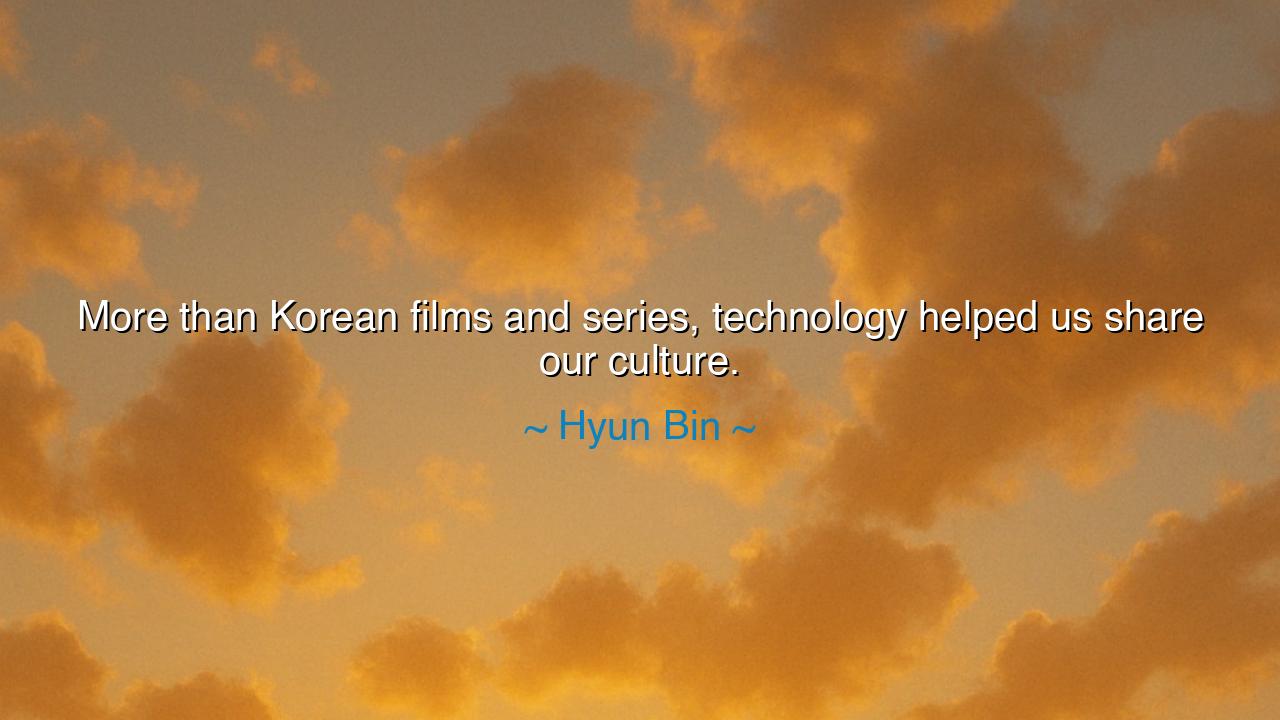
More than Korean films and series, technology helped us share






Hyun Bin once reflected with humility and insight: “More than Korean films and series, technology helped us share our culture.” In this simple yet profound statement lies a revelation about the power of technology as a vessel for human spirit. For while art is the fire, it is technology that carries the flame across oceans and mountains, allowing a culture once confined to its own land to become known, loved, and embraced throughout the world.
The origin of this wisdom lies in the rise of the Korean Wave—known as Hallyu—where music, drama, and cinema from South Korea swept across continents. While the artistry of actors, directors, and musicians was undeniable, Hyun Bin recognizes that it was not the films and series alone that created this global phenomenon, but the digital tools that delivered them. Streaming platforms, social media, and global connectivity became the wind beneath the wings of Korean creativity, ensuring that their culture reached the eyes and hearts of millions who might otherwise never have known it.
History gives us echoes of this truth. Consider the invention of the printing press in the time of Gutenberg. Literature and philosophy were not born in his century—they had long existed. But it was the press that multiplied them, spread them, and made them universal. Martin Luther’s words of reform, for example, would have remained local whispers if not for the technology of printing, which carried them across Europe. Just as the press expanded the reach of ideas, so too has digital technology expanded the reach of Korea’s cultural treasures.
Hyun Bin’s words remind us that technology is never neutral. It may enslave or liberate, distract or enlighten, divide or unite. But when it is harnessed to amplify culture, it becomes a bridge between peoples. A song from Seoul can bring joy to a family in São Paulo. A film about love and struggle can bring tears to eyes in Cairo. A television drama can create empathy in someone who has never walked the streets of Korea. Thus, technology transforms from cold machinery into a living channel of human connection.
Yet, there is also a deeper warning in his statement. For while technology magnifies culture, it can also magnify emptiness. What spreads across the world will shape how one nation is perceived, and so it is vital to fill the stream with art that uplifts, not corrupts. Korea’s success in sharing its stories shows what happens when a people pour authenticity, discipline, and beauty into their creations. Without that, technology alone would have been an empty vessel, carrying nothing of substance.
The lesson here is profound: never underestimate the partnership between creativity and technology. One without the other is incomplete. The artist must create with honesty, but also learn to use the tools of the age. The builder of tools must strive not only for speed and power but for platforms that elevate human spirit. Together, they carry culture into eternity.
Practical actions arise from this truth. If you are a creator, use technology to share your gifts, not only within your circle but with the wider world. If you are a consumer, seek out the art that uplifts and teaches, and let it shape your view of other peoples with compassion. If you are a leader, build platforms that respect culture and give voice to diverse expressions. For the world grows smaller each day, and what we share becomes the inheritance of all.
Thus let Hyun Bin’s words echo as teaching: it is not art alone, nor technology alone, but their union that spreads culture across the earth. As in the days of the printing press, so in the age of the internet: the stories of a people become the shared heritage of humanity. Let every generation remember that while art is the heartbeat, technology is the breath that carries it to the ends of the world.






AAdministratorAdministrator
Welcome, honored guests. Please leave a comment, we will respond soon